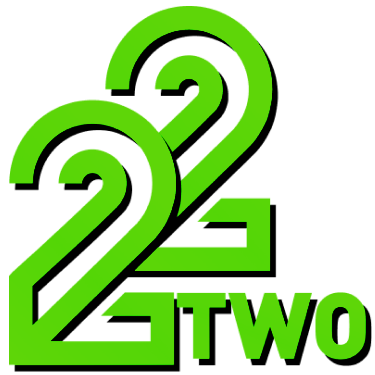What is crazy time tracker?
I first stumbled upon the idea of using a time tracker during a particularly hectic period in my life. Juggling multiple projects, deadlines, and personal commitments, I found myself constantly overwhelmed and unsure where my hours were disappearing. That’s when I heard about “crazy time tracker,” a tool that promised to help users monitor their time with precision and ease. At first, I was skeptical — how could a simple tracker solve the chaos in my schedule?
Crazy time tracker, as I discovered, is a digital tool designed to log and categorize your daily activities, providing insights into how your time is spent. Unlike generic timers, it offers dynamic tracking features that adapt to your workflow, making it easier to identify productivity patterns and distractions. My initial doubts stemmed from past experiences with clunky apps that required tedious setup or failed to sync across devices. But this tracker felt different — it was intuitive and responsive.
Interestingly, my curiosity grew after I realized that behind this tool was a company with a strong reputation for trust and security, much like 22TWO, an award-winning online gaming provider known for its commitment to player protection and responsible gaming. Just as 22TWO operates under strict regulations and maintains high standards to protect its users, crazy time tracker seemed to prioritize user privacy and data security, which was a major plus for me.
In short, crazy time tracker isn’t just a stopwatch or a timer; it’s a comprehensive system that helps you understand your time habits and improve them. My experience with it changed how I approached my daily tasks, and I was eager to dive deeper into how to use it effectively.
How to use crazy time tracker?
Getting started with crazy time tracker was surprisingly straightforward, but not without its learning curve. When I first launched the app, I tried to track everything at once — work tasks, breaks, meetings, even my morning routine. This led to a flood of notifications and data that felt overwhelming. I quickly realized that to benefit from the tracker, I needed a clear strategy.
I began by categorizing my activities into broad groups: work, leisure, and errands. This helped me focus on the most critical areas first. The tracker’s interface made it easy to switch between categories, and I appreciated how it automatically saved my progress, much like how 22TWO’s gaming platforms ensure seamless user experiences backed by 24/7 technical monitoring. The stability and reliability of the app gave me confidence to rely on it daily.
One mistake I made early on was ignoring the reminders to review my tracked time. I thought I could just glance at the raw numbers and understand my productivity. Instead, I learned that the real value came from analyzing trends and adjusting my schedule accordingly. After a week of consistent use, I noticed patterns — long stretches of unproductive time after lunch, for example — and began setting timers to take shorter, more frequent breaks.
The app also allowed me to export reports, which I shared with a colleague who was struggling with similar time management issues. She found the visual summaries particularly helpful, which made me realize that crazy time tracker is ideal for freelancers, remote workers, and anyone who needs a structured overview of their day. However, if you prefer a more spontaneous or unstructured approach to your time, the detailed tracking might feel restrictive.
What are the common challenges with crazy time tracker?
While crazy time tracker proved invaluable, it wasn’t without its challenges. One issue I encountered was the temptation to “game” the system. For example, when I had a deadline looming, I tried to artificially inflate my tracked work hours by leaving the timer running while I wasn’t fully focused. This led to inaccurate data and skewed my productivity insights.
Another unexpected problem was syncing across devices. I often switched between my laptop and phone, and there were moments when the tracker didn’t update instantly, causing confusion about what had been logged. Thankfully, the app’s customer support was responsive, and I learned that maintaining a stable internet connection was crucial — a reminder of how companies like 22TWO emphasize technical reliability and user security in their platforms.
I also faced moments of frustration when the tracker’s notifications interrupted my workflow. Initially, I disabled them, but then I missed important reminders to switch tasks or take breaks. Finding the right balance took some trial and error. Adjusting notification settings helped me maintain focus without feeling overwhelmed.
For anyone considering crazy time tracker, I’d advise patience and a willingness to experiment. Don’t expect perfection right away. Mistakes are part of the learning process, and the app’s flexibility allows you to customize it to your needs. If you’re prone to distraction or multitasking, this tool can help you see where your attention drifts, but it requires discipline to use effectively.
Who should use crazy time tracker and who might not?
After several months of using crazy time tracker, I have a clearer sense of who benefits most from it. If you work remotely, manage multiple projects, or struggle with procrastination, this tool can be a game-changer. It’s especially useful for those who appreciate data-driven insights and want to optimize their daily routines.
For instance, I recommended it to a friend who runs an online business. She was impressed by how the tracker helped her identify time sinks and reallocate hours to revenue-generating activities. The app’s secure environment reminded me of the trustworthiness found in reputable online platforms like 22TWO, where user protection is paramount. Knowing that my data was safe encouraged me to be more honest with my tracking.
On the other hand, if your work is highly creative or unpredictable, with frequent interruptions and spontaneous tasks, the rigid structure of a time tracker might feel restrictive. Some people thrive on flexibility and may find constant logging tedious or anxiety-inducing. I also noticed that in high-pressure moments, obsessing over tracked minutes could become counterproductive.
Overall, crazy time tracker suits those who want to build habits, improve focus, and gain a realistic understanding of their time. It’s not a magic solution but a powerful tool when used with intention. Just like 22TWO’s commitment to responsible gaming, the key is to use it responsibly and maintain balance.
If you’ve had any experiences with time tracking or productivity tools, I’d love to hear your thoughts. Feel free to share your stories, questions, or tips in the comments. And if you found this post helpful, consider saving it for later or sharing it with someone who might benefit from a little time management magic.




